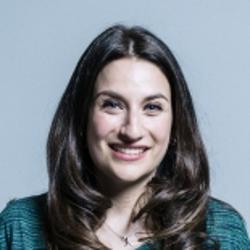Pupils: Autism
(asked on 27th April 2016) - View SourceQuestion to the Department for Education:
To ask the Secretary of State for Education, how many children in (a) primary and (b) secondary non-specialist schools have autism spectrum disorder; how schools are required to identify those children; and what support her Department gives to those children.
In January 2015, there were 35,030 children in mainstream primary schools and 30,845 children in mainstream secondary schools who were identified as having autistic spectrum disorder as their primary type of need[1].
Under the SEND Code of Practice all maintained schools are required to identify the special educational needs of pupils, including those with autism. Where any pupil makes less progress than expected, schools should assess the pupil’s needs, put in place suitable support to meet those needs and review it regularly to ensure it continues to be appropriate. If, despite additional support provided by the school, a pupil continues to make less progress than expected, the school (or the parents) can ask the local authority to carry out an Education, Health and Care (EHC) needs assessment of the pupil’s needs. If the local authority decides to issue an EHC plan, it will specify the provision needed to support the pupil’s needs and what additional resources will be funded by the local authority.
The Children and Families Act 2014 introduced significant reforms to the Special Educational Needs and Disability (SEND) system which will better support children and young people with autism in the education system. This includes the publication of ‘local offers’ of SEND services by local authorities, the introduction of streamlined EHC plans, and new statutory protections for young people aged 16-25 in further education.
The Act also makes provision to ensure that parents, children and young people are able to access impartial information, advice and support about the SEND system. This is available through a local, dedicated and easily identifiable service which includes help to prepare them for meetings with schools, health professionals or other agencies that may be supporting them in their education.
Under the Department’s Free Schools programme, there are now nineteen special free schools open across the country, including several that are specifically for children with Autism, such as the Rise free school in Hounslow, the Lighthouse free school in Leeds and the National Autistic Society’s Church Lawton free school in Cheshire. There are a further eleven special free schools due to open in the future, five of which will specialise in provision for children with autism, including the Heartlands Autism free school in Haringey and a second National Autistic Society free school, the Vanguard free school in Lambeth. The other six will offer some places for children with autism.
[1] National Statistics: Special Educational Needs in England 2015, Table 8, available here: https://www.gov.uk/government/statistics/special-educational-needs-in-england-january-2015).

